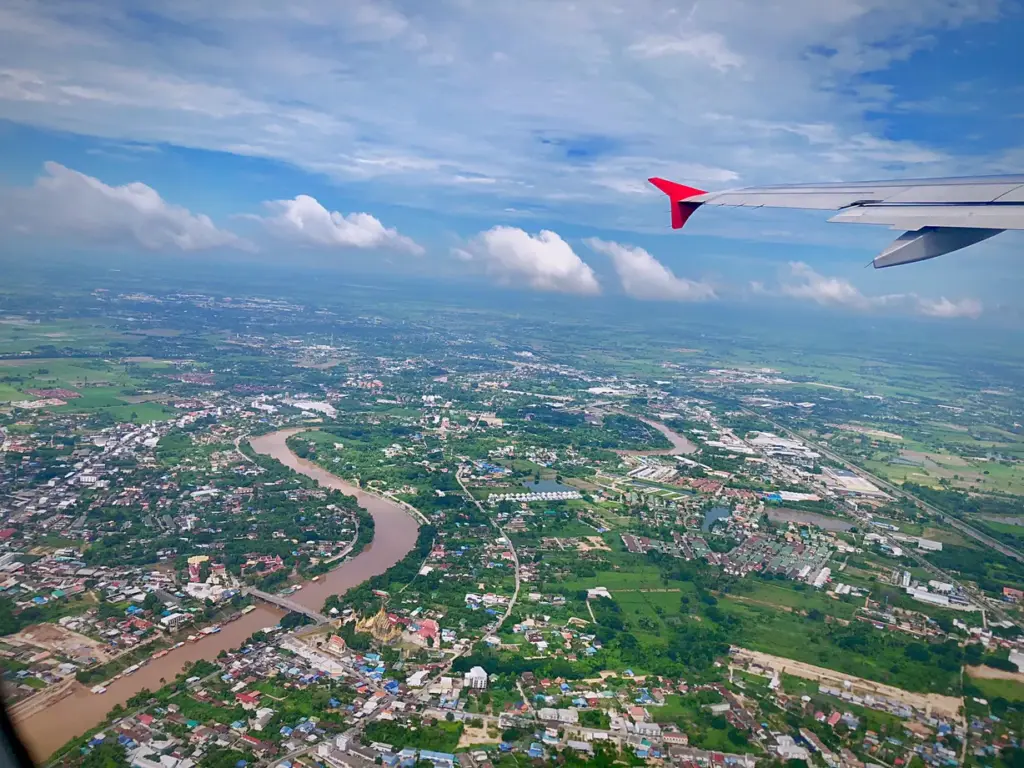Welcome to Kilimanjaro International Airport: Your Gateway to Adventure
Nestled at the foot of Africa’s highest peak, Kilimanjaro International Airport (JRO) serves as the primary entry point for travelers seeking to explore the natural wonders of Tanzania. As you step off your plane, you’ll be greeted by the warm Tanzanian sun and the promise of unforgettable experiences ahead. Let’s dive into what makes this airport a crucial hub for both international and domestic travelers.
Located approximately 40 kilometers from Arusha and 50 kilometers from Moshi, JRO is strategically positioned to serve the entire Kilimanjaro region. Its proximity to major tourist attractions, including Mount Kilimanjaro itself, makes it an ideal starting point for your Tanzanian adventure.
International Arrivals and Departures: Connecting Tanzania to the World
Kilimanjaro International Airport boasts an impressive array of international connections, making it easily accessible from various parts of the globe. Several major airlines operate regular flights to and from JRO, ensuring that you can reach this magnificent destination with ease.
Some of the key international routes available include:
- KLM Royal Dutch Airlines: Daily flights connecting Amsterdam to Kilimanjaro
- Turkish Airlines: Regular flights from Istanbul
- Qatar Airways: Flights from Doha, offering connections from numerous global destinations
- Ethiopian Airlines: Connecting Addis Ababa to Kilimanjaro
- Kenya Airways: Flights from Nairobi, providing easy access from other African countries
- Precision Air: Regional flights connecting Tanzania with neighboring countries
These international connections not only make it convenient for tourists to visit Tanzania but also facilitate business travel and trade in the region. Whether you’re embarking on a safari adventure, planning to climb Mount Kilimanjaro, or attending a business conference in Arusha, JRO serves as your gateway to these experiences.
Domestic Flights: Exploring Tanzania’s Diverse Landscapes
In addition to its international routes, Kilimanjaro International Airport serves as a hub for domestic flights within Tanzania. This network of internal flights allows visitors to easily explore the country’s diverse landscapes and attractions.
Several local airlines operate from JRO, including:
- Air Tanzania: The national carrier, offering flights to various destinations within the country
- Precision Air: Providing connections to major cities and tourist hotspots
- Coastal Aviation: Specializing in flights to remote airstrips and national parks
- Auric Air: Offering scheduled and charter flights to various Tanzanian destinations
These domestic flights make it convenient to combine different experiences in your itinerary. For instance, you could start your trip with a safari in the Serengeti, fly to Zanzibar for some beach relaxation, and then return to Kilimanjaro for a mountain trek – all without the need for long overland journeys.
Airport Facilities and Services: Ensuring a Comfortable Travel Experience
Kilimanjaro International Airport may not be as large as some major international hubs, but it offers a range of facilities and services to ensure a comfortable experience for travelers. Let’s explore what you can expect during your time at JRO.
Check-in and Immigration: The airport features modern check-in counters and immigration facilities. While queues can form during peak hours, the process is generally smooth and efficient. It’s advisable to arrive at least three hours before your international flight to allow ample time for check-in and security procedures.
Baggage Services: JRO provides baggage wrapping services for those who want extra protection for their luggage. Lost and found services are also available should you encounter any issues with your belongings.
Currency Exchange and ATMs: You’ll find currency exchange counters and ATMs in the airport, allowing you to obtain Tanzanian shillings upon arrival. However, it’s always a good idea to have some US dollars on hand, as they are widely accepted throughout Tanzania.
Food and Beverage Options: While the dining options at JRO are somewhat limited compared to larger airports, you’ll still find cafes and restaurants serving both local and international cuisine. It’s a great opportunity to sample some Tanzanian coffee or try local dishes before your onward journey.
Business Lounge: A Haven for Weary Travelers
For those seeking a more comfortable waiting experience, Kilimanjaro International Airport does offer a business lounge. The Tanzanite Lounge, named after the precious stone found only in Tanzania, provides a peaceful retreat from the bustling terminal.
The lounge offers amenities such as:
- Comfortable seating and relaxation areas
- Complimentary refreshments and light snacks
- Wi-Fi access for catching up on work or connecting with loved ones
- Television and reading materials
- Charging stations for your electronic devices
Access to the Tanzanite Lounge is available to business class passengers of certain airlines, as well as members of specific frequent flyer programs. Additionally, travelers can purchase day passes for the lounge, providing a comfortable space to relax before their flight or during long layovers.
Transportation Options: Getting to and from the Airport
Once you’ve arrived at Kilimanjaro International Airport, you’ll need to consider your options for reaching your final destination. Fortunately, several transportation methods are available to suit different preferences and budgets.
Taxi Services: Official airport taxis are available outside the terminal building. These provide a convenient, albeit somewhat pricier, option for reaching nearby towns like Arusha or Moshi. Always agree on the fare before starting your journey.
Shuttle Services: Many hotels and tour operators in the region offer shuttle services to and from the airport. If you’ve pre-booked accommodation or a tour package, check if airport transfers are included.
Car Rental: Several car rental agencies have desks at the airport, allowing you to hire a vehicle for your stay. This can be a good option if you plan to explore the region independently, but be prepared for variable road conditions and different driving norms.
Public Transportation: While not as convenient as other options, public buses do operate between the airport and nearby towns. This is the most budget-friendly option but requires more time and patience.
Exploring the Kilimanjaro Region: Adventures Await
Now that we’ve covered the practicalities of arriving at and navigating Kilimanjaro International Airport, let’s explore some of the incredible experiences that await you in the surrounding region. The airport’s strategic location puts you within easy reach of some of Tanzania’s most iconic attractions.
Mount Kilimanjaro: Of course, the star attraction is the mountain itself. Standing at 5,895 meters (19,341 feet), Mount Kilimanjaro is Africa’s highest peak and the world’s highest free-standing mountain. Whether you’re planning to climb to the summit or simply admire its majestic presence from afar, Kilimanjaro is a sight to behold.
Arusha National Park: Just a short drive from the airport, this park offers a diverse landscape of crater lakes, lush forests, and open savannah. It’s an excellent spot for wildlife viewing, including buffalo, giraffes, and various monkey species. The park also offers canoeing experiences on the Momella Lakes.
Serengeti National Park: While further afield, the legendary Serengeti is accessible via domestic flights from JRO. Famous for its annual wildebeest migration and incredible concentration of wildlife, the Serengeti offers an unparalleled safari experience.
Cultural Experiences: Immersing in Local Life
Beyond its natural wonders, the Kilimanjaro region offers rich cultural experiences that shouldn’t be missed. Consider adding some of these activities to your itinerary:
Maasai Village Visits: Engage with the Maasai people, known for their distinctive customs and colorful attire. Many villages near Arusha offer tours where you can learn about their traditional way of life.
Coffee Plantations: The slopes of Kilimanjaro are home to numerous coffee plantations. Take a tour to learn about the coffee-making process and sample some of Tanzania’s finest brews.
Local Markets: Explore bustling markets in Arusha or Moshi to experience daily Tanzanian life and perhaps pick up some souvenirs. The Maasai Market in Arusha is particularly popular for traditional crafts and jewelry.
Practical Considerations: Preparing for Your Visit
As you plan your trip to Tanzania, there are several important factors to keep in mind to ensure a smooth and enjoyable experience:
Visas: Most visitors to Tanzania require a visa. While visas on arrival are available for many nationalities, it’s often more convenient to obtain an e-visa online before your trip. Check the latest requirements well in advance of your travel date.
Vaccinations: Tanzania has specific health requirements for entry. Yellow fever vaccination is mandatory if you’re arriving from a country with risk of yellow fever transmission. It’s advisable to consult with a travel health professional about other recommended vaccinations and malaria prophylaxis.
Currency: The local currency is the Tanzanian Shilling, but US dollars are widely accepted, especially in tourist areas. Ensure you bring crisp, newer bills, as worn or older notes may be refused.
Language: While Swahili is the national language, English is widely spoken in tourist areas and by those working in the tourism industry. Learning a few basic Swahili phrases can greatly enhance your interactions with locals.
Sustainable Tourism: Traveling Responsibly
As you enjoy the wonders of Tanzania, it’s crucial to consider the impact of your visit on the local environment and communities. Here are some ways to practice sustainable tourism:
Respect Wildlife: When on safari or nature walks, always follow park rules and your guide’s instructions. Never feed or approach wild animals, and avoid any activities that may cause distress to wildlife.
Support Local Communities: Choose tour operators and accommodations that have a commitment to local community development. Many offer opportunities to visit community projects or purchase locally-made crafts.
Reduce Plastic Waste: Bring a reusable water bottle and avoid single-use plastics. Many lodges and camps now offer water refill stations.
Conserve Resources: Be mindful of water and electricity usage, especially in areas where these resources may be scarce.
Wrapping Up Your Tanzanian Adventure
As your time in Tanzania comes to an end and you find yourself back at Kilimanjaro International Airport, take a moment to reflect on the incredible experiences you’ve had. From the moment you first stepped off the plane, you’ve been on a journey through one of Africa’s most diverse and captivating countries.
Whether you’ve conquered the slopes of Kilimanjaro, witnessed the great migration in the Serengeti, or simply immersed yourself in the warm hospitality of the Tanzanian people, you’re leaving with memories that will last a lifetime. As you wait for your departure flight, perhaps enjoying a final Tanzanian coffee in the airport café, you might already be planning your return trip.
Kilimanjaro International Airport may be your point of departure, but it’s also a promise of future adventures. Tanzania’s wonders are endless, and there’s always more to explore. So as you board your plane home, don’t say goodbye – say “tutaonana tena” – see you again. Because once you’ve experienced the magic of Tanzania, you’re sure to return.



